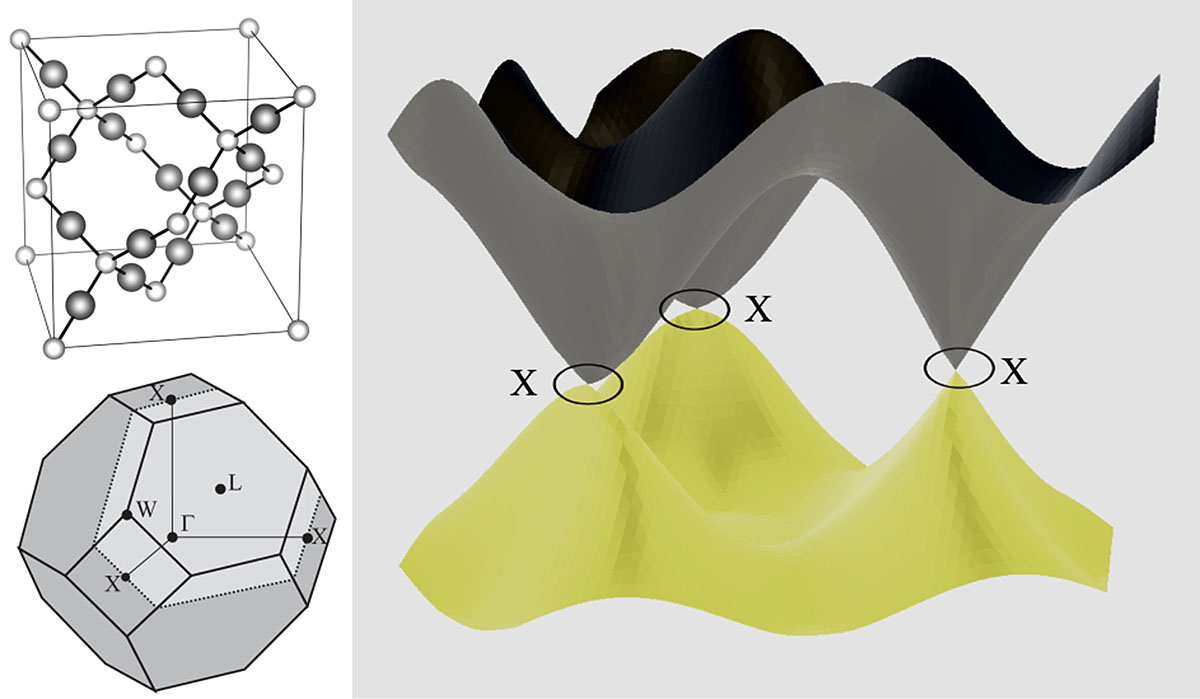In the landscape of condensed matter physics, the emergence of Dirac semimetals represents a remarkable convergence of relativistic quantum mechanics and solid-state phenomena. These exotic materials epitomize a phase of matter wherein the electronic band structure exhibits a characteristic nodal point, engendering unique physical properties that defy conventional paradigms. To grasp the essence of Dirac semimetals, one must venture into the intricate interplay between symmetry, topology, and electronic behavior.
Understanding the Band Structure
The fundamental concept underlying Dirac semimetals lies in their band structure, which can be likened to a hilly terrain of energy landscapes traversed by electrons. In this analogy, Dirac semimetals are akin to a flat plateau, where the valence and conduction bands meet at discrete points known as Dirac points. These points appear at the intersection of electron-like and hole-like states, resulting in a zero gap state—an intriguing scenario that instigates a massless behavior reminiscent of relativistic particles.
For a physicist, the Dirac points are both a focal point and a paradoxical enigma; they exist in a phase space that is simultaneously stable and susceptible to various perturbations. The holistic understanding of these materials demands a deep dive into their symmetry properties. In essence, Dirac semimetals preserve certain symmetries such as time-reversal and inversion symmetries, which govern the robustness of their electronic properties.
The Relativistic Nature of Electrons
One of the striking characteristics of Dirac semimetals is the linear dispersion relation near the Dirac points, which can be expressed mathematically as:
E(k) = ±ħv_F |k|
Here, E represents the energy of the electrons, k denotes the wavevector, and v_F is the Fermi velocity, which plays a critical role in determining electron mobility. This linear dispersion situates electrons within a regime where they emulate massless relativistic behavior, akin to photons in a vacuum. The result is a marked enhancement in electrical conductivity, leading to applications that may revolutionize electronic devices.
Topological Aspects
Dirac semimetals are not merely interesting due to their electronic properties; they are also intertwined with the burgeoning field of topological insulators. The innovative topology manifests through the non-trivial band structure, yielding surface states that are protected against perturbations. This protection is akin to the armor of a knight—robust against external forces while preserving the integrity of the core states.
The nodal line or Dirac points act as a bridge between conventional semiconductors and the realm of three-dimensional topological phases. These materials can transition into other states under the influence of external fields or structural perturbations, thus serving as a fertile ground for exploring novel quantum phenomena. This malleability entices researchers to explore their properties, presenting possibilities that could reshape our understanding of quantum matter.
Unique Physical Properties
Dirac semimetals possess an array of remarkable physical properties, which render them exceptionally appealing for both theoretical and experimental research. Among these properties is the occurrence of anabelian quantum Hall effect. In simple terms, this phenomenon allows for the transport of charges in a quantized manner without the conventional constraints that apply to typical materials.
Moreover, their unique band topology fosters an environment conducive to the exploration of spintronics—the burgeoning field that manipulates the intrinsic spin of electrons for novel electronic applications. The interplay between spin and momentum in Dirac semimetals facilitates spin polarization, a phenomenon that constitutes an essential ingredient for future spin-based devices.
Applications and Future Perspectives
The burgeoning interest in Dirac semimetals lays the groundwork for potential advancements in various technological realms, particularly in electronics and photonics. Their ability to sustain high mobility at room temperature makes them candidates for next-generation transistors, where performance and energy efficiency are paramount. Additionally, their unique optical properties open avenues for applications in advanced photonic devices, such as sensors and modulators.
As the field of material science continues to innovate, the discovery of new Dirac semimetals may unlock characteristics that transcend our current understanding. The research community is poised on the brink of new revelations, from novel manipulation techniques to more effective fabrication methods. Through advanced synthesis techniques and experimental probes, such as angle-resolved photoemission spectroscopy, scientists can elucidate the rich phase diagram of these materials.
Conclusion
In summary, Dirac semimetals beckon as a vibrant tapestry woven from the threads of quantum mechanics, topology, and solid-state physics. Their unique band structure, characterized by Dirac points, facilitates a range of intriguing behaviors that challenge the established norms of material science. The potential applications in electronics, spintronics, and photonics provide a tantalizing glimpse into a future where these materials may play a pivotal role in shaping technological advancements. The quest to harness the full power of Dirac semimetals continues, inviting scholars and innovators alike to delve into this fascinating domain, where theory meets application in a striking dance of interaction and discovery.












